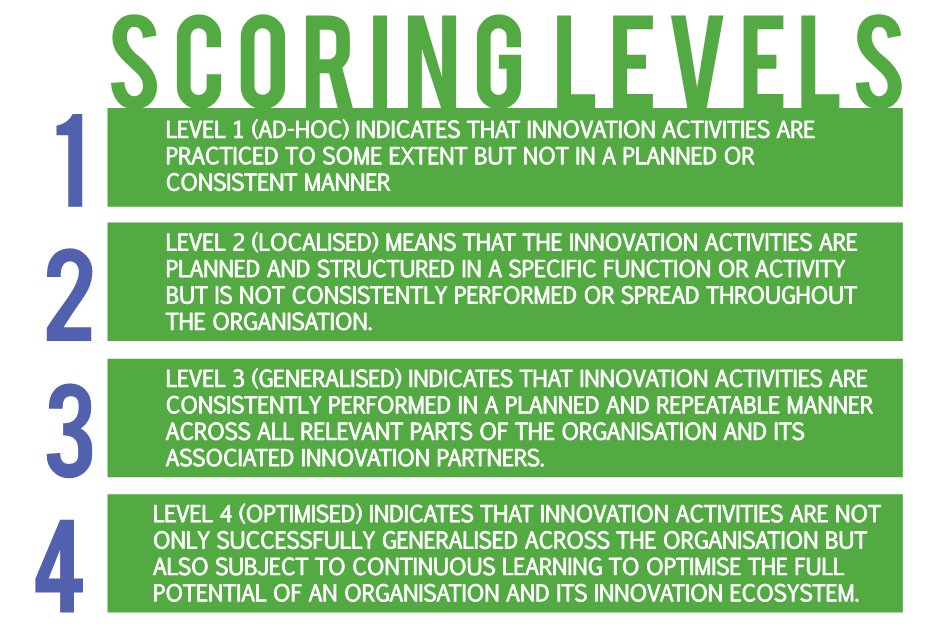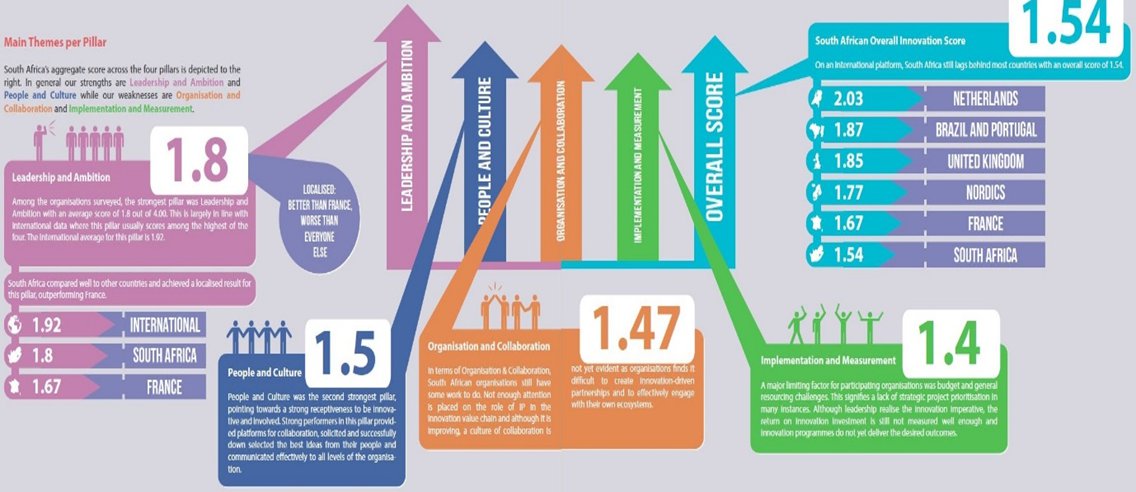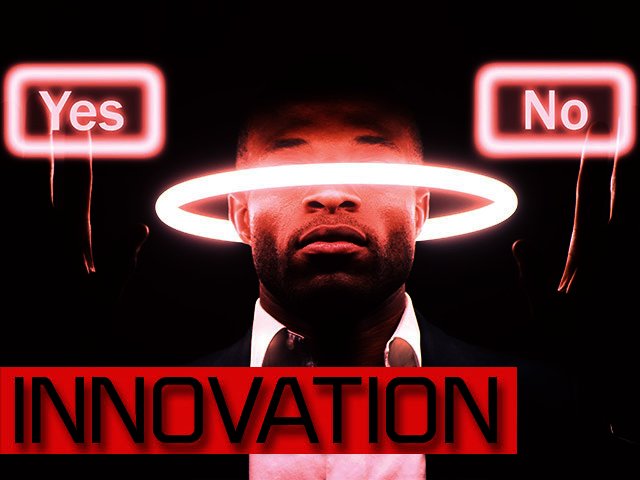In the first article of an ongoing series on Innovation, brought to you by Innocentrix, we take a look at the South African landscape and how local companies rate when it comes to innovation.
Organisations the world over are thinking about new ways to remain relevant and ensure future success. For many, building an internal innovation capability forms an integral part of a strategy for future growth. Business trends further suggest that amongst other things, the organisation’s ability to collaborate with various stakeholders across its value chain will become increasingly important.
From a local perspective, the same is true for South Africa - we need to do things differently. Our local business context is in many ways similar to that of global organisations as we deal with the same issues, yet it is tied to our own unique opportunities and constraints. Strategic planning for growth in South Africa needs to take cognisance of global innovation trends while remaining anchored in local relevance. When South Africa’s top organisations start innovating, the impact on our GDP will be exponential. This needs to be encouraged, celebrated and communicated so that collectively, as a nation we grow and solve social ills by means of our ability to sustainably innovative.
In an effort to showcase the country’s top innovation leaders and recognise South African innovation excellence, Innocentrix, an innovation business and technology services company, recently carried out a study to place the spotlight on innovation within South Africa’s top organisations. The aim was to do exactly what was discussed above: to gain insights into our local innovation landscape and to share these across industry to encourage learning.
An Innovation League ranking innovative local organisations
The Innocentrix Innovation League study explored organisations’ approaches to innovation management. It examined if and how organisations recognise innovation as key to establishing or maintaining a competitive advantage, whether our leadership styles, corporate culture and implementation strategies are working and whether the necessary resources are being made available to ensure growth and sustainability.
The Innovation League was conducted using the internationally recognised Innovation Readiness Model (IRM), developed by French business school INSEAD, UK IT and management consultancy firm, Logica. The IRM has a unique way of benchmarking an organisation’s innovation readiness, referring to an organisation’s ability to apply leading edge thinking to the topic of collaborative innovation.
The pillars of collaborative innovation success
Four pillars of achievement were studied in the process. These pillars can be viewed as the foundation on which organisations can build sustainable collaborative innovation.
These are:
1. Leadership & Ambition, referring to strategies, processes and approaches to innovation as well as leadership’s communication styles,
2. Organisation & Collaboration, that considers internal and external collaboration as well as how employees work together,
3. Implementation & Measurement that talk to how strategies are implemented, impact is measured and innovation investment levels, and
4. People & Culture that focus on employees and how they participate in the innovation process. It includes culture and human resources policies.
Scoring using the IRM takes place according to levels and by using a model out of four as follows:

Revealing local results
Overall, South African organisations scored relatively well on average (1.54 as opposed to the international average of 1.85 across the four pillars), but specific strengths and weaknesses were evident. South African organisations appear to be well led, with high scores on the Leadership and Ambition pillar. People and Culture followed closely behind with the second highest score, showing a capacity and willingness for innovation within company employees. We did less well in both the Organisation and Collaboration, as well as the Implementation and Measurement pillars. Resistance was evident towards the idea of collaboration between organisations, with only a handful really achieving successful collaborative partnerships. The data also showed that ideas are often generated, sometimes implemented, but rarely properly measured to demonstrate a true capacity for return on investment.
Leadership and Ambition
South Africa’s strength lies in its leadership for innovation. There is no doubt that local organisations understand the innovation imperative and that leadership is taking responsibility. Seventy seven percent (77%) of the organisations surveyed said that innovation responsibility resides at CEO level.
People and Culture
Our local corporate culture portrayed a picture of employees that have a willingness to change. Sixty three percent (63%) believed that people understood their roles and responsibilities in terms of innovation. It was evident that resources were allocated in this regard, but not sufficiently. The greatest challenge was funding, time for innovation, a fear of failure and risk adversity in general.
Organisation and Collaboration
Apart from a couple of organisations that really started to build competencies in this area, most were not doing a good job of it. Although 66.5% agreed that their organisations had a well implemented processes for innovation, it was evident that this did not allow for effective internal or external collaboration and that outcomes were not strategically aligned to deliver value. As far as collaboration were concerned, local organisations were collaborating with experts first, then with suppliers and thirdly with research institutions like universities. Open innovation was a concept that is gradually better understood but few organisations applied their minds towards its execution.
Implementation and Measurement
The greatest challenges for organisations were implementation and measurement in terms of innovation ROI. Budget was the most pressing problem while resource constraints and conflicting work demands made things worse. Innovation measurement was also not high on the agenda (with just over 50% benchmark activities in this regard) and implementation in general took place in an ad-hoc manner.
How do we do compared to international organisations?
When comparing South Africa’s innovation potential to that of the international sphere, Innocentrix found that South African organisations still have a way to go. Even though some of the pillars score well, our average score is lagging behind. We do, though, compete quite closely with France on innovation leadership scores, but still have some improvements to make before we can compare with the innovation potential of countries like the Netherlands or UK.

The Way Forward
Although the picture is still not entirely rosy from a local perspective, we are making progress. South Africans are hitting the headlines internationally and we are confident in our ability to bring new innovations to the world-market. From an innovation perspective however, applying and implementing our local innovation genius remains a challenge.
ABOUT INNOCENTRIX: Innocentrix is a South African based innovation business and technology services company that provides value to clients with world-leading innovation products and services. The Innocentrix approach enables true innovation eco-system collaboration, brings together global expertise and best-in-class innovation management technologies. We assist our clients to get to where they want to go.
For more information on Innocentrix, and for a complete copy of the Innocentrix Innovation League Report, please visit www.innocentrix.co.za.





